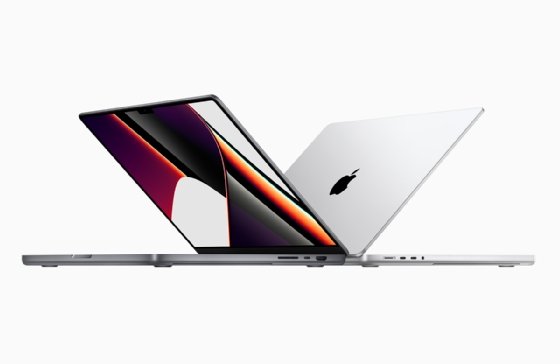
Getty Images/iStockphoto
Apple ditches hated MacBook Pro features, adds M1 chips
The new MacBook Pro laptops come in 14-and 16-inch models, return ports that were missing in the past few iterations, and add faster, more energy-efficient processors.
Apple's redesigned MacBook Pros eliminate features many of its users hated, bring back features the company had removed and add more powerful chips to encourage people to keep buying their flagship PC.
The MacBook Pro 14- and 16- inch models, revealed during Apple's "Unleashed" event this week, will start at $2,000 and $2,500 respectively. The new laptops are built with the successors to the M1 chips Apple released last year called M1 Pro and M1 Max, giving users increased memory bandwidth and capacity.
Both models bring back the HDMI port, the SD card slot and the MagSafe power adapter -- a charger with a magnetic input that snaps off to prevent the laptop from being pulled down accidentally. The MacBooks include four Thunderbolt 4 ports as well.
Users took to Twitter to cheer the return of the ports and the function keys they preferred over the touch bar, a mini touchscreen that adapted its functions to the app being used. Apple also got rid of the thinner butterfly keyboard it delivered in 2015, which had a number of reported usability problems.
"It's going back to the old days of Mac," said Mikako Kitagawa, an analyst at Gartner. "They're listening to their users, because they don't want to lose anyone. They have to make them happy."
Apple has an 8.8% share of the global PC market, up from 8.3% this time last year, according to the latest IDC research. In the enterprise, Apple has a 4.6% market share and has held steady at around 4% for the last few years.

MacBooks, which make up the majority of Apple's PC sales, appeal not only to creative professionals who use the laptops for graphics and video editing, but also to analysts who need to process large amounts of data, said IDC analyst Ryan Reith.
Apple's custom silicon goes Pro
The newest proprietary chips will offer something that Intel and AMD currently don't -- assuming Apple's claims play out.
The M1 Pro chip features 33.7 billion transistors, can deliver up to 200 GB per second of memory bandwidth and supports up to 32 GB of unified memory, or memory that both the main processor and graphics processor have access to.
The M1 Max chip has 57 billion transistors, can deliver up to 400 GB per second of memory bandwidth and supports up to 64 GB of unified memory. It also costs more.
A MacBook Pro 14-inch equipped with a M1 Max chip starts at $3,100, and the 16-inch with an M1 Max starts at $3,500.
The M1 Pro and Max chips give competitor Intel cause for worry, because Intel's presence in Apple products has been steeply diminishing since the M1 chips launched last November, Reith said.
Midway through the year, 77% of Apple PCs include the M1 chip and only 23% use Intel chips. IDC projects that next year, Apple will sell 90% of its PCs using the M1 and only 10% on Intel chips.
"Intel is looking at that going, 'It's only a matter of time,'" Reith said.
Intel CEO Pat Gelsinger publicly acknowledged that Intel needs to improve its chips, both to compete with Apple and to keep the company as a customer.
Maxim Tamarov is a news writer covering mobile and end-user computing. He previously wrote for The Daily News in Jacksonville, N.C., and the Sun Transcript in Winthrop, Mass. He graduated from Northeastern University with a degree in journalism. He can be found on Twitter at @MaximTamarov.








